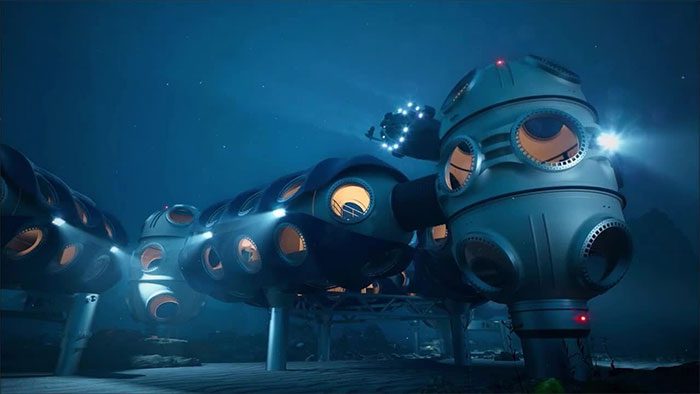The British research organization DEEP plans to build an underwater modular base named Sentinel, expected to open in 2027.
Simulation of the underwater Sentinel base. (Video: DEEP)
Sentinel will be modular, and is expected to include living quarters, research laboratories, and an underwater observatory, as reported by Design Boom on September 11. The base will allow scientists to live underwater at a depth of 200 meters for up to 28 days, facilitating more thorough research of continental shelves. Scientists will be able to observe, closely monitor, and gain a better understanding of the ocean and marine life once the project is operational.
The construction site for the base is proposed to be located between the southwestern region of England and Wales. This location was chosen for its suitable terrain, clear waters, and proximity to several companies specializing in marine engineering, diving, high-pressure techniques, and submarines.
Experts will construct Sentinel using robotic welding arms, applying technology similar to 3D printing with metal materials, which enables the structure to withstand extreme pressure. The modular system will be adaptable, customizable, and flexible in layout changes. Each module will have a diameter of 6 meters, approximately the width of a Boeing 777 fuselage, and will be capable of accommodating 6 people.

The base allows scientists to live underwater at a depth of 200m for up to 28 days.
DEEP has established its own academy to train divers. They will assist in transporting structures from land to underwater and guide the long-term operations of Sentinel.
The Sentinel electricity system will be built using a micro-grid structure integrated with DEEP’s satellite communication buoys and renewable energy sources. The expert team at DEEP is also researching a large-scale bioreactor to process all waste.
“We need to preserve the oceans. To do that, we need to understand them,” stated Steve Etherton, a leader at DEEP. Through ocean research, DEEP aims to explore opportunities and solutions in pharmaceutical research, carbon capture, and improved medications.




















































